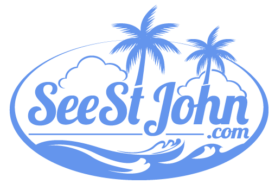Brown Bay’s white sand beach is almost certain to be deserted as there is no vehicle access, and the trail entrance is far from the more populated areas of the island. Brown Bay is a poor anchorage for vessels coming by sea, so it’s uncommon to see yachts at anchor here.
When you are out hiking the trails, Brown Bay Beach is a perfect place to cool off, relax, take a swim and explore the ruins. There are shady places to sit and usually a cooling ocean breeze. This is a great spot to enjoy a picnic lunch in a natural and private setting where you can often enjoy having such an idyllic spot all to yourself.
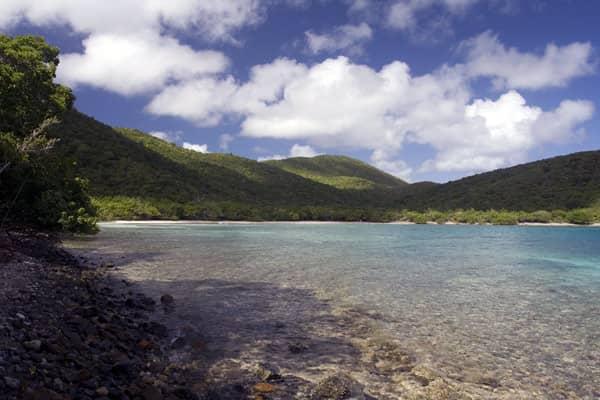
How To Get To Brown Bay
Starting from the Coral Bay Moravian Church, go east about a mile on East End Road (Route 10.) After you pass Estate Zootenvaal, you will cross a small concrete bridge. Turn left just after the bridge and park on the dirt road. Twenty yards up the road, you will come to a fork. The right fork is the beginning of the Brown Bay Trail. It is a three-quarter-mile hike to the beach.
Brown Bay can also be reached by taking the Brown Bay spur trail off the Johnny Horn Trail. The Johnny Horn Trail connects Waterlemon Cay and the Moravian Church in Coral Bay. The Brown Bay spur trail is not maintained and can be very unfriendly because of the abundance of thorny bushes. More information on the Brown Bay Trail in the last section.
Brown Bay Ruins
Brown Bay has some of the most extensive ruins on the island of St. John. To explore them, proceed to the western end of the beach and then make your way further along the shoreline until you see the beginning of the ruins. Also, an abundance of flotsam washing up along the beach makes for excellent beachcombing.
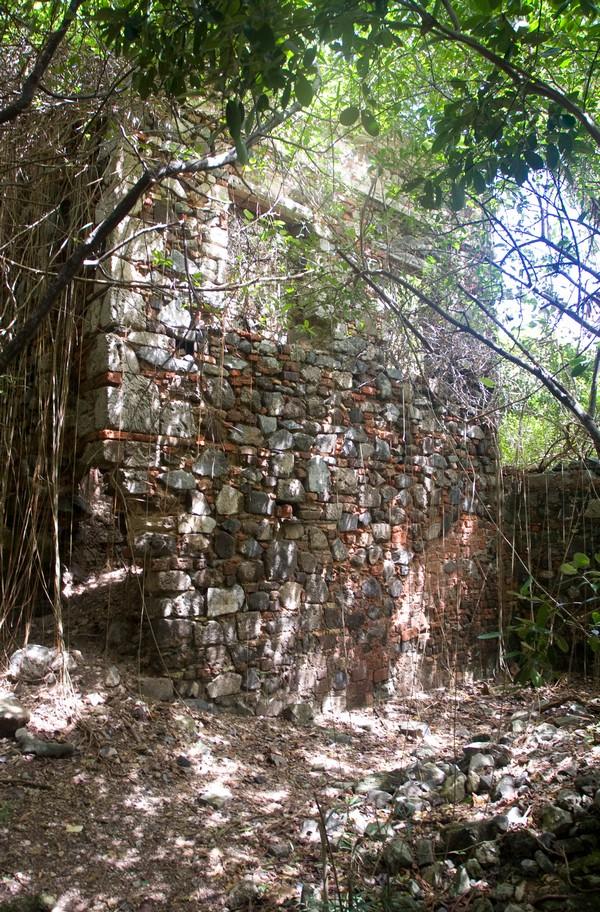
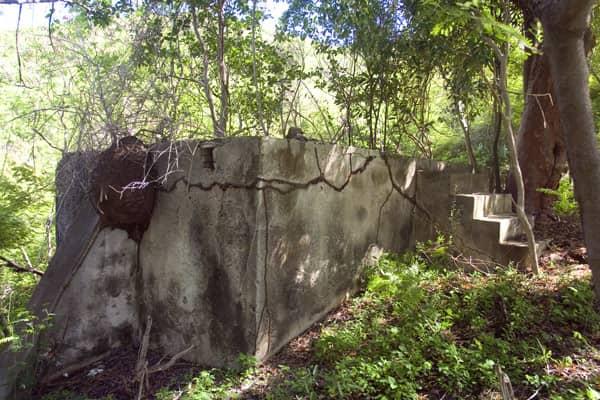
Snorkeling At Brown Bay
The bottom of the bay is sand and grass, offering an easy entry. It is quite shallow at first but deepens gradually, providing access to excellent snorkeling further out from the beach. The snorkeling here is best on calm days when the water is not churned up and murky.
The most colorful and interesting area to snorkel in Brown Bay is around the point on the eastern side of the bay, where there is a relatively shallow fringing reef, which slopes down to a depth of about twenty feet.
There are several beautiful specimens of hard corals near the top of the reef, and on the sloping hillside is a garden of gorgonians, such as sea fans, sea whips, and sea plumes. You will often see larger fish here due to the proximity of the deep Sir Francis Drake Channel.
Brown Bay Trail
Begin at the trailhead out on East End, where a National Park Service sign marks the entrance to the trail. Parking for three or four vehicles is available here.
A short distance from the road, the trail forks with a trail to the left leading to the Virgin Islands National Park firing range and the Brown Bay Trail running straight ahead and up the hill.
About a hundred yards up the trail, there exist remains of a large concrete cistern supported on the lower side by buttresses.
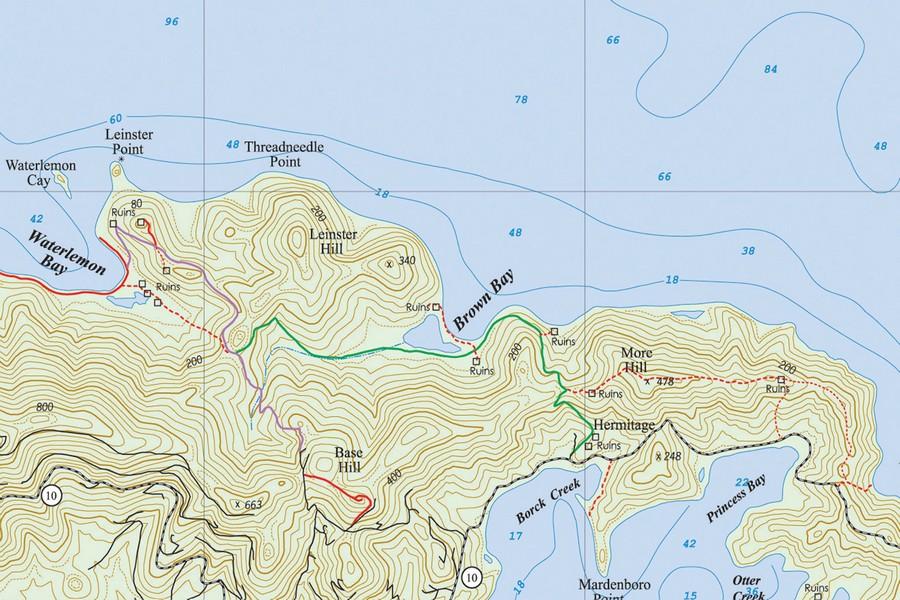
Follow the narrow trail leading to the cistern, and once there, you can discover more trails and ruins.
The Brown Bay Trail runs up the hill on the southern side of St. John, crosses the ridge of hilltops forming the narrow peninsula of East End, and then descends to the northern coast.
The southern face of the hillside shows evidence of once supporting animal grazing. This section of trail is by and large hot, dry, and scrubby, but there are several places from which there are openings in the bush, allowing for good southerly views.
Crossing the ridge and descending the northern hillsides is a welcome change. It’s cooler, shadier, and, more importantly, downhill.
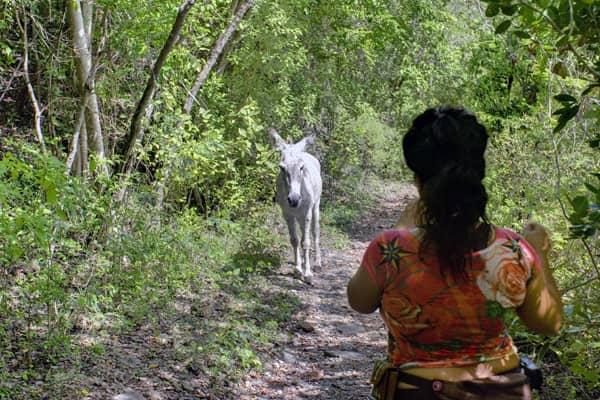
Last time I went there, we met a donkey that was hesitant to pass us on the narrow trail. Behind him was a hiker with two dogs that barked threateningly, such that the donkey was even more hesitant about turning around and going the other way. Eventually, we stepped back into the bush far enough so that the donkey could pass us and go on his way, leaving us and the dogs behind.
The environment on the north is dry forest and not nearly as disturbed as the southern side. I noticed a lot of West Indian Birch along the trail, which I used to cut for fish pot braces. Guavaberry trees also caught my eye, but most welcome was that genip tree with ripe genips that required some work to gather but tasted pretty sweet.
The trail descends to the northern coastline and meets a spur to the beach at Brown Bay. Previous visitors have constructed rudimentary benches where one can sit, relax and enjoy the sights, sounds, and smells of this rarely visited beach.
Trails behind the beach lead to a salt pond and an area of extensive ruins, well worth exploring.
